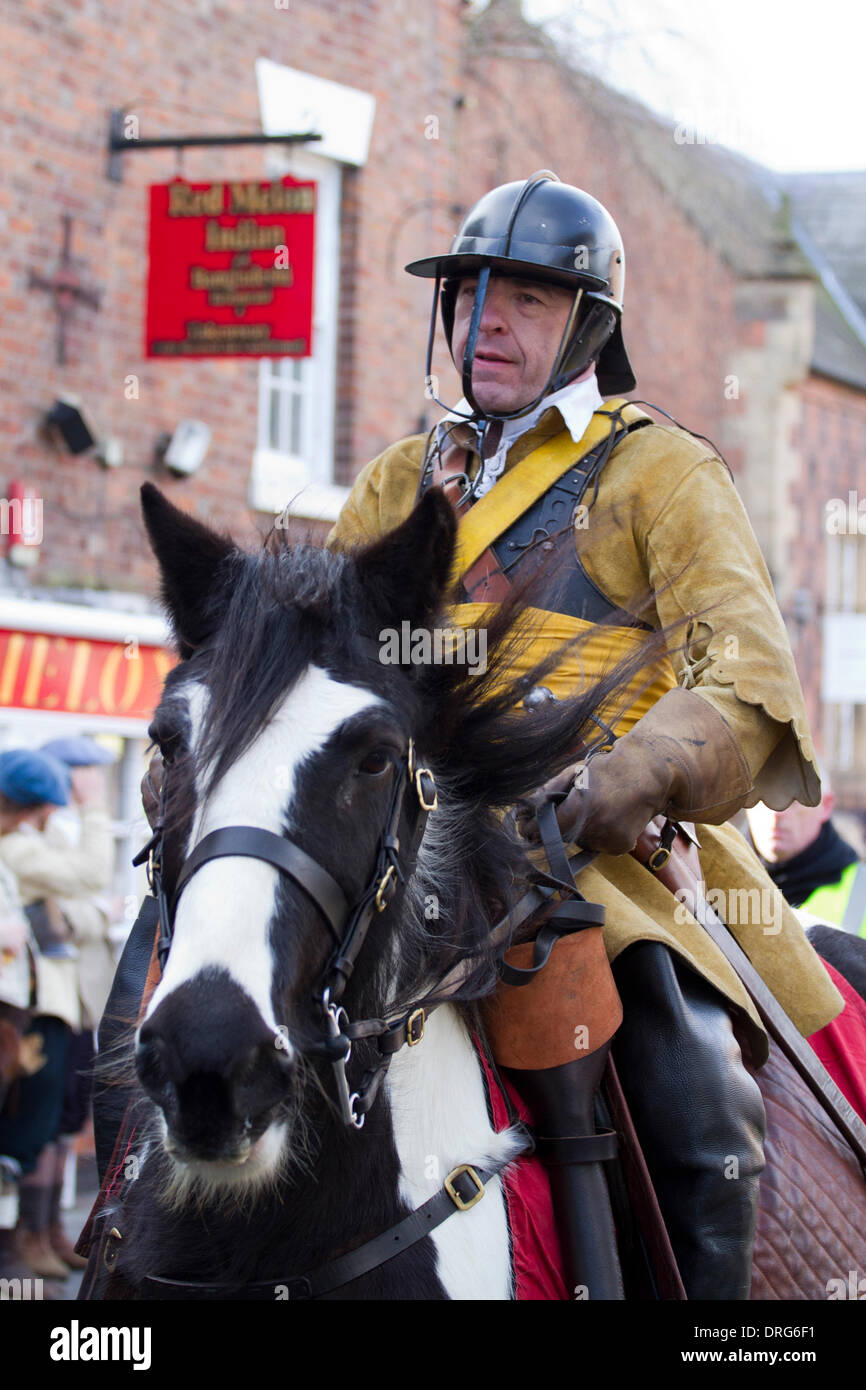Nantwich, Cheshire, UK 25th January, 2014. Mounted Roundhead at Holly Holy Day & Siege of Nantwich re-enactment. For over 40 years the faithful troops of The Sealed Knot have gathered in the historic town for a spectacular re-enactment of the bloody battle that took place almost 400 years ago and marked the end of the long and painful siege of the town. Roundheads, cavaliers, and other historic entertainers converged upon the town centre to re-enact the Battle. The siege in January 1644 was one of the key conflicts of the English Civil War. Credit: Conrad Elias/Alamy Live News

Image details
Contributor:
Conrad Elias / Alamy Stock PhotoImage ID:
DRG6F1File size:
23.4 MB (891.6 KB Compressed download)Releases:
Model - no | Property - noDo I need a release?Dimensions:
2333 x 3500 px | 19.8 x 29.6 cm | 7.8 x 11.7 inches | 300dpiDate taken:
25 January 2014More information:
This image could have imperfections as it’s either historical or reportage.
“The Battle of Nantwich was fought during the First English Civil War, between the Parliamentarians and Royalists, northwest of the town of Nantwich in Cheshire on 25 January 1644. The Royalists under Lord Byron were besieging Nantwich, and Sir Thomas Fairfax led an army to relieve the town. As Fairfax approached, a sudden thaw caused the River Weaver to rise in spate, dividing Byron's cavalry from his infantry and artillery, who were overrun and destroyed by Fairfax.The Parliamentarian victory halted a run of Royalist successes in the area, and was a major setback to King Charles I's plan of campaign for the year. In 1643, King Charles had signed a "cessation" with the Irish Confederates. This allowed him to recall several English regiments which had been sent to Ireland after the Irish Rebellion of 1641, to reinforce his armies.[3] In November 1643, several of these regiments were sent to Cheshire where a new field army was being raised, commanded at first by Lord Capell. Capell was replaced in December by Lord Byron, who had been a successful cavalry brigade commander in the King's main "Oxford Army". Byron launched an offensive from the south with 5, 000 men against the Parliamentarian garrisons in Cheshire, most of which were quickly captured. The troops recently returned from Ireland behaved with a degree of ruthlessness not previously displayed in the English Civil War. At Barthomley Church on 26 December, the Parliamentarian garrison surrendered after the Royalists lit a fire against the doors to smoke them out. At least twelve of the prisoners, mostly local militia, were executed in cold blood, with Byron's approval. On 27 December, Sir William Brereton, the Parliamentarian commander in Cheshire and Lancashire, attempted to concentrate his forces to confront Byron, but was defeated by a sudden Royalist attack at the Second Battle of Middlewich. He retreated with the remnants of his force to Manchester in Lancashire.